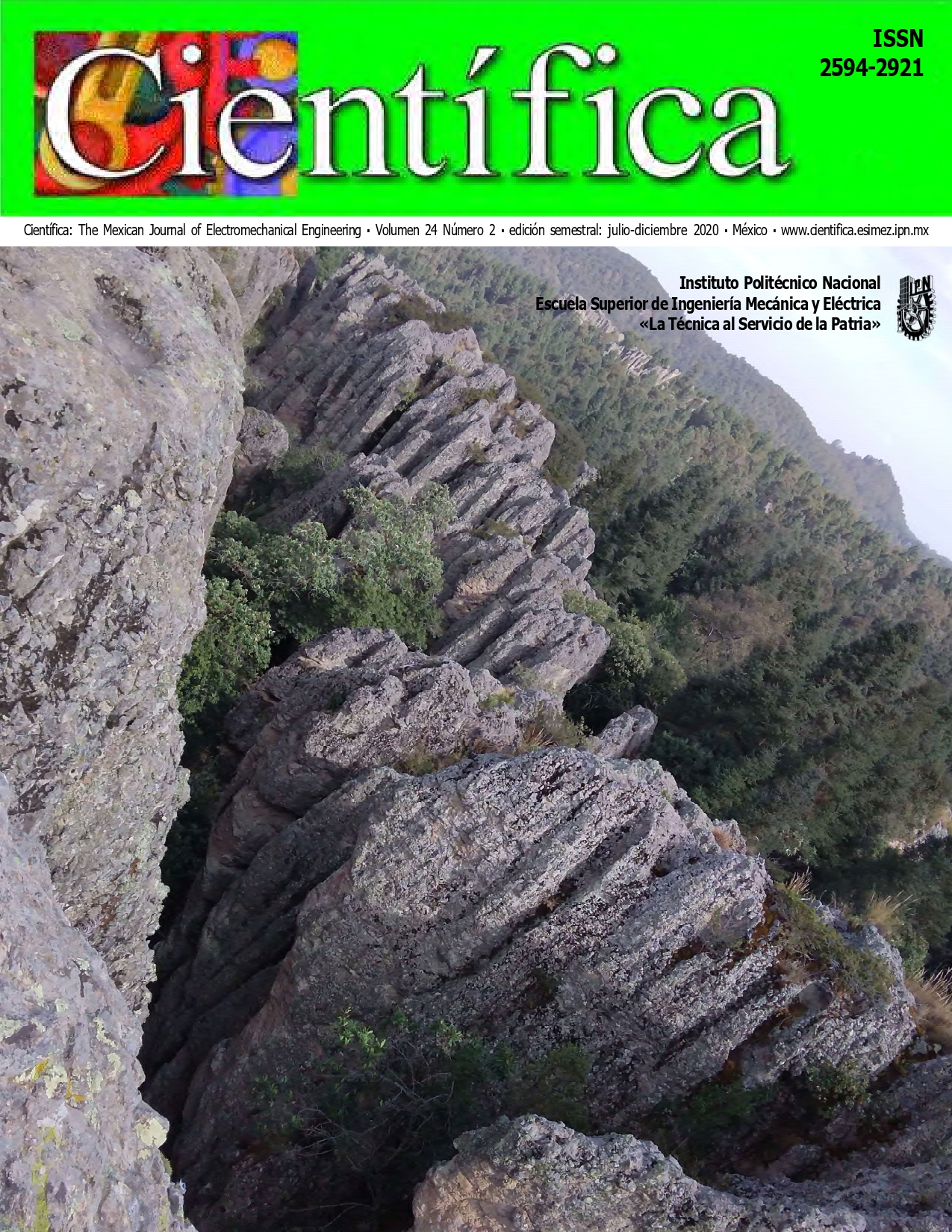Model to Determine the Dispatch and Cost of Reactive PowerGeneration of the GCROR in a Released Electricity Market
DOI:
https://doi.org/10.46842/ipn.cien.v24n2a01Keywords:
reactive power generation, wholesale electricity market, auxiliary services, particle swarm optimization, independent system operator, generation costAbstract
Since 2013, Mexico has liberated its energy sector and thereby ventures into the Wholesale Electricity Market (MEM) model. In this context, the network services that are necessary to perform the energy transmission service called auxiliary services, such as the reactive power of generation due to its particularity of having a local effect, enter into the controversy of: how they should be managed? Who should give the service? And how much should be paid for the service? These are some controversies that arise when liberating an electricity sector. This paper proposes to use a stochastic method called Particle Swarm Optimization (PSO) that is applied in an Electric Power System (EPS) in order to obtain an efficient reactive power dispatch that gives security and reliability to the EPS, once this scenario is determined, the methodology proposed can be applied to obtain the cost of reactive power for each generator. The PSO method can obtain a quick solution based on having an efficient reactive power dispatch respecting voltage bands on buses with the minimum electrical losses, using the CENACE System Independent Operator's electrical network, at a voltage level of 400 kV. The main conclusions of this research are: the efficient administration of reactive power using EPO, reduces electrical losses to a minimum, constants C1 and C2 are important to obtain better results in optimization and the proposed method is a practical tool to use in time real, because the reactive power supplied has a local impact that is within the scope of the system operator.
References
A. Sedaghati, "Cost of Transmission System Usage Based on an Economic Measure," Transactions on Power Systems, vol. 21, núm. 2, pp. 466- 473, 2006.
K. Bhattacharya, M. H. Bollen, & J. E. Daaler, Operation of Restructured Power Systems, Norwell, Massachusetts: Kluwer Academic Publishers, 2001.
Cámara de Diputados del H. Congreso de la Unión Mexicano, DECRETO por el que se reforman y adicionan diversas disposiciones de la Constitución Política de los Estados Unidos Mexicanos, en Materia de Energía, 20 diciembre 2013. [En línea]. Disponible en: http://www.dof.gob.mx/nota_detalle.php?codigo=5327463&fecha=20/12/2013. [Último acceso: 13 septiembre 2013].
Cámara de Diputados del H. Congreso de la Unión Mexicano, Ley de la Industria Eléctrica, 11 agosto 2014. [En línea]. Disponible en: http://www.diputados.gob.mx/LeyesBiblio/pdf/LIElec_110814.pdf. [Último acceso: 13 septiembre 2017].
Centro Nacional de Control de Energía, "Formulación Matemática del Modelo de Asignación de Unidades con Restricciones de Seguridad y Cálculo de Precios Marginales Locales y de Servicios Conexos en el Mercado de un Día en Adelanto," enero 2016. [En línea]. Disponible en http://www.cenace.gob.mx/Docs/MercadoOperacion/Formulaci%C3%B3n%20Matem%C3%A1tica%20Modelo%20AU-MDA%20y%20PML%20v2016%20Enero.pdf. [Último acceso: 23 septiembre 2017].
Cámara de Diputados del H. Congreso de la Unión Mexicano, resolución por la que la Comisión Reguladora de Energía expide las Disposiciones Administrativas de carácter general que contienen los criterios de eficiencia, calidad, confiabilidad, continuidad, seguridad y sustentabilidad del Sistema Eléctrico Nacional, 08 abril 2016. [En línea]. Disponible en: http://dof.gob.mx/nota_detalle.php?codigo=5432509&fecha=08/04/2016. [Último acceso: 24 septiembre 2017].
J. W. Lamont, J. Fu, "Cost Analysis of Reactive Power Support," IEEE Transactions on Power System, vol. 14, núm. 3, pp. 890-898, 1999.
J. J. Grainger, W. D. Stevenson, Análisis de Sistemas de Potencia, México: McGraw Hill, 2007.
J. H. Tovar Hernández, M. Jiménez Jiménez, G. Gutiérrez Alcaráz, "Metodología Basada en Sensibilidades para Asginar Costos de Servicios de Control de Voltaje y Potencia Reactiva en Mercados Eléctricos Desre-gulados," Computación y Sistemas, pp. 58-66, 2002.
S. Luna Quroz, Estudio de estabilidad transitoria en la red de 400 kV del sistema eléctrico de potencia del área de control oriental para mejorar su confiabilidad, Puebla: BUAP, 2015.
M. Farzaneh, S. Farokhi, W. A. Chisholm, Electrical Design of Overhead Power Transmission Lines, United States of America: McGraw-Hill, 2013.
Comisión Federal de Electricidad, Curso de Control de Voltaje, México: CFE, 2011.
Z. Junfang, M. Qinguo, D. Xinzhou, "Real-Time Pricing of Reactive Power Considering Value of Reactive Power Resourses," CICED, pp. 1-6, 2008.
P. S. Kate, P. R. Khatri, "Determination or Price of Reactive Power Services in Deregulated Electricity Market Using Particle Swarm Optimization," National Power Systems Conference, pp. 1-5, 2012.
X. Hu, Swarm Intelligence, 2006. [En línea]. Disponible en: http://www.swarmintelligence.org/index.php. [Último acceso: 19 octubre 2017].
R. L. Bla, Sintonización de un Controlador PID unsando Particle Swarm Optimization en un Control Automático de Generación de un Sistema Eléctrico de Potencia Multiárea, España: Universidad de Sevilla, 2014.
J. K. Clerc, "The Particle Swarm Explosion, Stability and Convergence in Multidimensional Complex Space," IEEE Transactions on Evolutionary Computation, vol. 6, núm. 1, 2002.
M. Sedighizadeh, A. Rezazadeh, M. Seyed Yazdi, "Pricing of Reactive Power Service in Deregulated Electricity Markets Based on Particle Swarm Optimization," International Journal of Computer and Electrical Engineering, vol. 2, núm. 6, pp. 960-963, 2010.
O. Fernández Galindo, Modelo Estocástico para Evaluar el Costo de Potencia Reactiva de Generación de la Gerencia de Control Regional Oriental del Centro Nacional de Control de Energía, Puebla: BUAP, 2018.
R. D. Zimmerman, C. E. Murillo-Sánchez, R. J. Thomas, "Matpower: Steady-State Operations, Planning and Analysis Tools for Power Systems Research and Education," Power Systems, IEEE Transactions, vol. 26, núm.1, pp. 12-19, 2011.
R. D. Zimmerman y C. E. Murillo Sánchez, MATPOWER, 21 febrero 2019. [En línea]. Disponible en: http://www.pserc.cornell.edu/matpower/. [Último acceso: 14 abril 2019].
CENACE, Catálogos de Nodos, 15 junio 2018. [En línea]. Disponible en: https://www.cenace.gob.mx/paginas/publicas/mercadooperacion/nodosp.aspx. [Último acceso: 27 abril 2019].
L. Y. Villagrán-Villegas, I. V. Hernández-Rodríguez, J. C. Anzelmetti-Zaragoza, A. Marquina-Chávez, C. M. Calderón-Ramón, "Generalidades de estrategias de control en aerogeneradores de transmisión directa," Científica, vol. 21, núm. 1, enero-junio 2017.
I. Carvajal-Mariscal, P. Quinto-Diez, J. E. Flores-Ortega, R. Bravo-Cadena, C. A. Real-Ramírez, "Aplicación de la teoría del costo exergético para el análisis de un sistema de refrigeración con subenfriamiento por un enfriador termoeléctrico," Cientifica, vol. 21. núm, 1, enero-junio 2017.
Downloads
Published
Issue
Section
License
Copyright (c) 2020 Instituto Politecnico Nacional

This work is licensed under a Creative Commons Attribution-NonCommercial-ShareAlike 4.0 International License.

